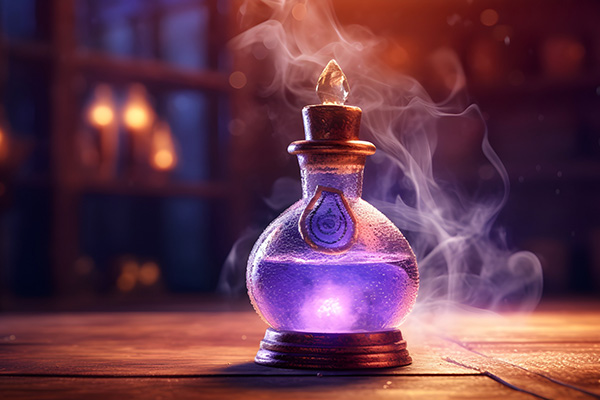psychic reading
From Ancient Mystics To Modern Psychics
 Psychics and mediums have been around since the dawn of human civilization: from the shamans in indigenous cultures, to the oracles of ancient Greece and Rome, the seers and druids of Celtic societies, the sages of ancient China, and the prophets of ancient Middle Eastern cultures.
Psychics and mediums have been around since the dawn of human civilization: from the shamans in indigenous cultures, to the oracles of ancient Greece and Rome, the seers and druids of Celtic societies, the sages of ancient China, and the prophets of ancient Middle Eastern cultures.
Some famous examples include Pythia, the Oracle of Delphi in ancient Greece; the Celtic soothsayer Myrddin Wyllt, also known as Merlin in later Arthurian legends; the Chinese wu (shaman) Jing Fang; Black Elk, the renowned Native American holy man of the Oglala Lakota Sioux people; Isaiah, the renowned prophet of the ancient Near East; and Agastya, the revered Hindu sage and seer.
Throughout human history, in different cultures and societies, there have always been individuals with mystical abilities who held important roles within their communities and served as intermediaries between the physical world and spiritual realms.
They served as conduits of divine wisdom, predicting future events, providing insight into hidden truths, and offering guidance on various matters. They often acted as special advisors to tribal leaders, rulers, and kings, and typically played an important role in the moral and spiritual direction of their people.
The term “psychic” comes from the Greek word psychikos, meaning “of the soul, spirit, or mind.” In Greek mythology, Psyche was the goddess of the soul. Her name literally means “soul” or “breath.” Over time, the term came to encompass aspects of the mind beyond the ordinary.
Unleash The Power Of Your Intention
When I first started working professionally in the spiritual field, I used to get pretty uptight about whether or not I was spending enough time preparing myself properly before consulting with clients, both for psychic readings and energy healing sessions. That was until I visited a well-known elderly spiritualist who lived in the countryside outside of Johannesburg, South Africa, for a reading.
“You work with spirit, just like I do,” I remember him saying. “But I sense that you worry that your preparation is weak and not good enough.”
He was right, I was often stressed about having enough time to prepare with my guides before the sessions began. I always want to give my best to my clients and feared that I would disappoint them if I was not properly prepared and perfectly “tuned in.” Was I doing it right? Did I spend enough time on it? Was I leaving out an important step? Should I just do it once a day before I start or before every single session?
Ironically, while my sincere intention with all this worrying was to give my clients the best readings and healings possible, I was actually not always giving my best, because I was so stressed and worried about being well-prepared!
“All you have to do is set your intention clearly every day before you start,” the wise old gentleman said. It was like a weight was lifted off my shoulders. Of course! Keeping it simple is often the best approach to most things in life, so why should it not work in spiritual endeavors also?
This was how I learned that the most important ingredient for successful preparation in any spiritual practice or metaphysical activity is intention. Today, I like to think of intention as the vital spark that lights the flame. It is a powerful tool in all metaphysical practices. Oddly enough, intention is often the key aspect of our spiritual practices that is most often overlooked.
Never Confide In The ‘Empathy Impaired’
 I recently did a reading for a client who asked me a question that I had never been asked before. Even though it was my first time working with her, her question made me ask myself the same question about my own life.
I recently did a reading for a client who asked me a question that I had never been asked before. Even though it was my first time working with her, her question made me ask myself the same question about my own life.
Her question was simple: Who can I confide in? Who can I trust? We then worked through her short list of significant people in her life and I shared what I felt about each of them with the guidance of spirit.
I immediately felt that two particular people were not the kind of people you would want to trust completely, much less confide in.
The first clear indicator was inconsistency in their words and actions. If someone frequently says one thing and does another, it suggests a lack of reliability and sincerity.
Another red flag that immediately came up was gossiping or speaking negatively about others behind their backs, as this behavior demonstrates a lack of confidentiality and respect.
But I always want to make sure that what I am psychically sensing is accurate before I reveal this kind of information. So, I asked her for her date of birth, along with the first names and dates of some of the people she wasn’t so sure about. Sure enough, she confirmed what I had initially seen.
Psychics and mediums often use “soul identity details” such as birth dates, photos, names, or even personal items like clothing or jewelry to enhance the connection with a particular person’s energy or spirit. I think of it as looking into someone’s “soul footprints.” This enhances the psychic connection process in several ways:
Perfect Love Is For Better Or Worse
 For those of us who are spiritually aware and seeking to live consciously, the experience of a mystical romance can be both healing and enlightening. But the journey of soulmate love is not always a matter of moonlight and roses.
For those of us who are spiritually aware and seeking to live consciously, the experience of a mystical romance can be both healing and enlightening. But the journey of soulmate love is not always a matter of moonlight and roses.
What is perfect love? Does it even exist? How can two people make their love last? Do we belong together? How can we be soulmates if we argue all the time? How is this a sacred union if he is being such a jerk?
These are some of the questions I sometimes get asked in relationship readings.
The guidance from spirit is always the same. The best marriages and committed relationships all have their ups and downs. Perfect love is loving your partner when things aren’t perfect. It’s about owning your differences and working through them as a team.
Perfect love isn’t about a flawless journey but about embracing the imperfections with grace. Meaningful relationships are an intricate dance, an alchemical symphony of highs and lows, joy and challenges. Perfect love that lasts will always have its ups and downs, like an exciting roller coaster ride.
In my experience, people who stay married for a very long time make their relationships last by being flexible and going with the ebb and flow. Successful partnerships ride this cosmic wave we call life. And when those big waves roll in during more challenging times, they just ride it out because there is always smoother sailing ahead. Hard times never last.
Using Essential Oils To Enhance Your Psychic Awareness
 Essential oils have many esoteric uses beyond traditional aromatherapy. In fact, many experienced spiritual seekers use essential oils in their daily practices. But what is less well known is that these magical oils can also be used to enhance intuition and promote psychic awareness.
Essential oils have many esoteric uses beyond traditional aromatherapy. In fact, many experienced spiritual seekers use essential oils in their daily practices. But what is less well known is that these magical oils can also be used to enhance intuition and promote psychic awareness.
Aromatic substances also help increase focus and clarity during meditation, divination, energy healing, and psychic reading. By engaging the sense of smell, you can more effectively anchor your awareness in the present moment, reduce distractions, and promote a state of mindfulness or psychic attunement to open your channels of intuition. I also feel more attuned to subtle energies and spirit presences when I use aromatherapy in my psychic work.
Essential oils are a wonderful spiritual tool that promote relaxation, mental clarity and emotional balance, which in turn creates a conducive environment for exploring your intuition and inner awareness.
Smell is closely linked to the limbic system in the brain, which is associated with emotions, memories, and instinctual responses. When we encounter a particular scent, it can evoke strong emotional or subconscious reactions. In spiritual practices, certain scents can trigger deep-seated feelings or associations, helping to create a particular mental or emotional state conducive to psychic experiences.
Overall, the power of scent and aroma in spiritual and esoteric practices is multifaceted, involving a combination of sensory, psychological, cultural, and symbolic factors. Aromas serve as powerful tools for creating sacred spaces, enhancing psychic experiences, and facilitating inner transformation through their profound influence on the mind, body, and spirit.
Raise Your Vibration With Humor, Fun And Laughter!
 I recently completed the first of two months of practice in a year-long advanced psychic development course that I am currently taking. The practical tests were quite challenging, even for an experienced psychic, but overall I am happy to say that it went quite well.
I recently completed the first of two months of practice in a year-long advanced psychic development course that I am currently taking. The practical tests were quite challenging, even for an experienced psychic, but overall I am happy to say that it went quite well.
One of the tests required us to do a psychic reading for a stranger via video call, with the goal of perceiving details about the person at different stages of their life. In other words, we had to sense significant details about them when they were children, teenagers, in their 20s, 30s, 40s, and so on.
Before my test reading, I prepared by mentally focusing on the lady I was to read for and I did this while walking my dogs. I have found over the years that this daily time outdoors with my beloved pets is great time to receive psychic information.
It also helped that we were sent a photo of our randomly assigned subjects in advance, so I could also visualize her in my mind’s eye, which makes the process easier.
So, by the time I called her on FaceTime for the reading, I had already written down a lot of information about her younger years before the session began. For example, I had seen that she had a fairly happy childhood and even had a vision of her blowing on daisies to make a wish.

